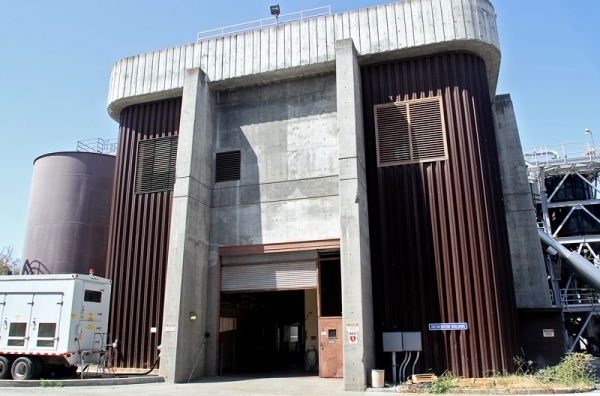Palo Alto's plan to retire the two sludge-burning incinerators in the Baylands could receive a major boost next week, when the City Council is set to approve construction of a $22-million facility that would allow the city to haul out -- rather than burn -- local sewage.
The major project is a critical stepping stone in the city's years-long quest to revamp its waste-processing operation -- an effort that has both energized and caused friction between Palo Alto's environmentalist camps. In 2011, Palo Alto voters approved a measure to "undedicate" 10 acres of parkland in Byxbee Park to enable construction of an anaerobic-digestion plant that would convert organic waste into energy. While some praised the new facility as a victory for sustainability, others argued that the Baylands is the wrong place for a new waste-treatment facility.
While the city is still surveying existing technologies and considering its options for the broader overhaul, Public Works staff is preparing to move ahead with the non-controversial first phase: the decommissioning of the polluting incinerators. On Monday night, the council will consider a $22.9-million contract with the firm C. Overaa & Co. for the new sludge dewatering and load-out facility. The council will also vote on a $2 million construction-management company with Tanner Pacific.
The contract with C. Overaa includes about $2 million for additional and unforeseen work related to the project.
According to Public Works, the facility will be used to load trucks with dewatered sludge, which would then be hauled to a regional facility for further treatment, which may involve composting, gasification, anaerobic digestion.
While the total cost of the project is estimated at close to $25 million, Palo Alto won't be footing the bill alone. The Regional Water Quality Control Plant, which was constructed in 1934, also serves Mountain View, Los Altos, Los Altos Hills, the East Palo Alto Sanitary District and Stanford University, and the city's partners will reimburse the city for their share in the cost. The city will be responsible for 38 percent of the costs, according to a Public Works report.
The city also plans to get some assistance with the project from the California State Water Resources Control Board, which has a program that provides low-interest financing for agencies with wastewater projects. The board has been working with the city to prepare an "installment sale agreement" to make the financing possible.
The city hopes to have construction of the new facility completed by summer 2019.



Comments
Adobe-Meadow
on Apr 13, 2017 at 12:41 pm
on Apr 13, 2017 at 12:41 pm
This is a great project.
The article does not answer these two questions.
1. Does this facility use *any* of the 10 acres of Byxbee Park that were undedicated?
2. How much greenhouse gas reductions come from this facility alone, even counting the trucking the dewatered sludge to a regional facility? How does that compare with greenhouse gas reductions from the whole waste-to-energy project as originally proposed?
3. What contribution does this project make to Palo Alto's 80% reduction by 2030 greenhouse gas reduction goal?